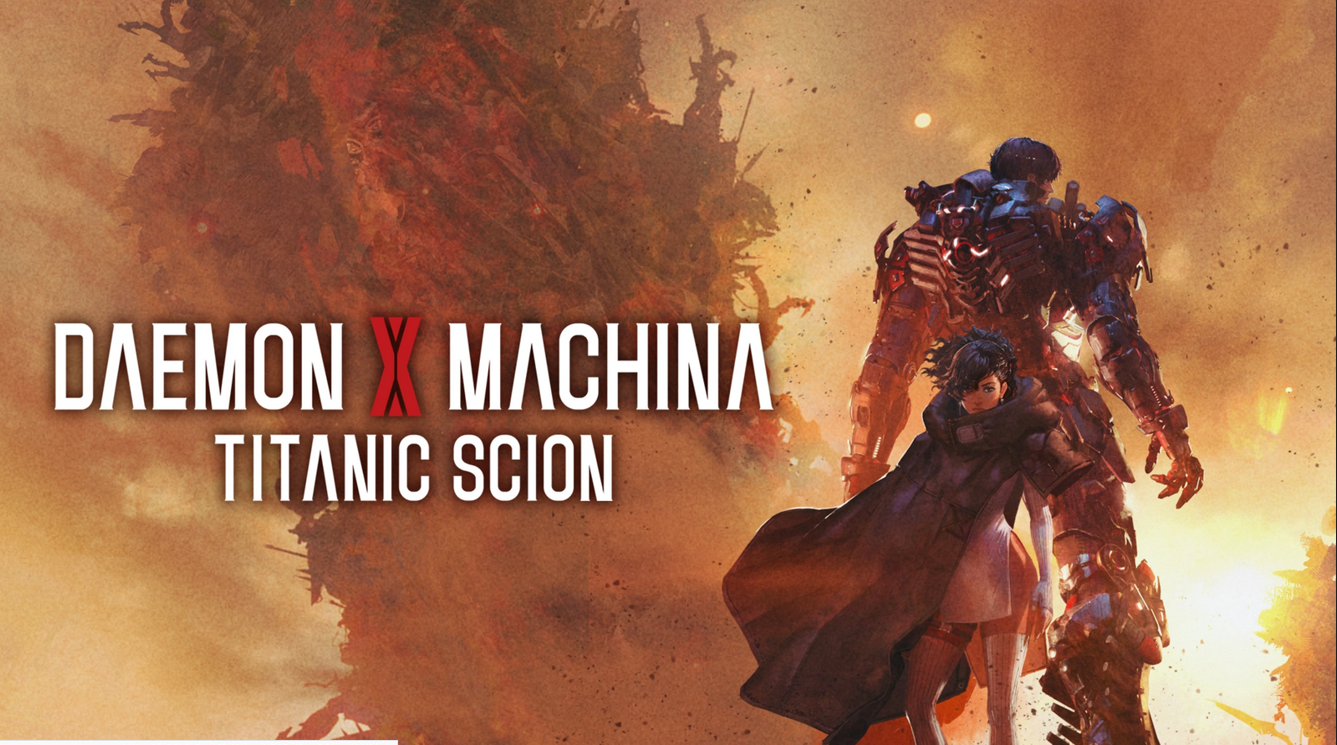On that shiny mechanoid surface, Daemon X Machina: Titanic Scion looks like it would tick a lot of boxes. The sequel to 2019’s Daemon X Machina, which was developed mostly just for the Nintendo Switch, Titanic Scion is upping everything, from the graphics to the scale to the story. We’ve got the Nintendo mechs of Xenoblade, but more of the mechanized suit scale of Vanquish (if the kids remember that), we’ve got the combat of something close to Zone of the Enders, and during that combat, we’ve got the guitars of Dynasty Warriors. Sounds good.
Full disclosure – I did not play the first game in the series, and so, like most players on PlayStation 5 and Xbox consoles, I will be coming to this with fresh mech vision. Is it what it looks like on the surface, or is there nothing in the engine but air? With an open-world action title as ambitious as this, but also firmly in the AA space, there’s quite a lot to unpack. So, let’s don our mech suits and get out there!
The setup for Daemon X Machina: Titanic Scion is full of history and lore, and events that happened in a multi-century spanning galactic war. There’s a full page opening crawl that I’m not going to get into here.
Suffice to say, you do your character creation, and you wake up in an orbital space station called Axiom, about to be enslaved to a mech for a kind of Homo-superior race called the Outers, and later the Neun. They’re all camp and really out there anime designs. However, moments later, you’re sprung from this fate by a young friend called Nerve, you steal a mech suit, and escape the ship. Only your friend doesn’t make it. Dead or alive, we aren’t sure, as we plummet to the nearby planet’s surface.
The first laugh-out-loud ridiculous coincidence (there’ll be more) is that after your fall from orbit, you land within a few hundred yards of the man who designed your suit. Obviously, that’s really useful for upgrades and the like, but it’s bafflingly over the top in terms of likelihood. Forge could of just been any mechanic, but no, he designed the whole system. He has a little robot son called Toby, who’s all sassy and quippy, because anime.
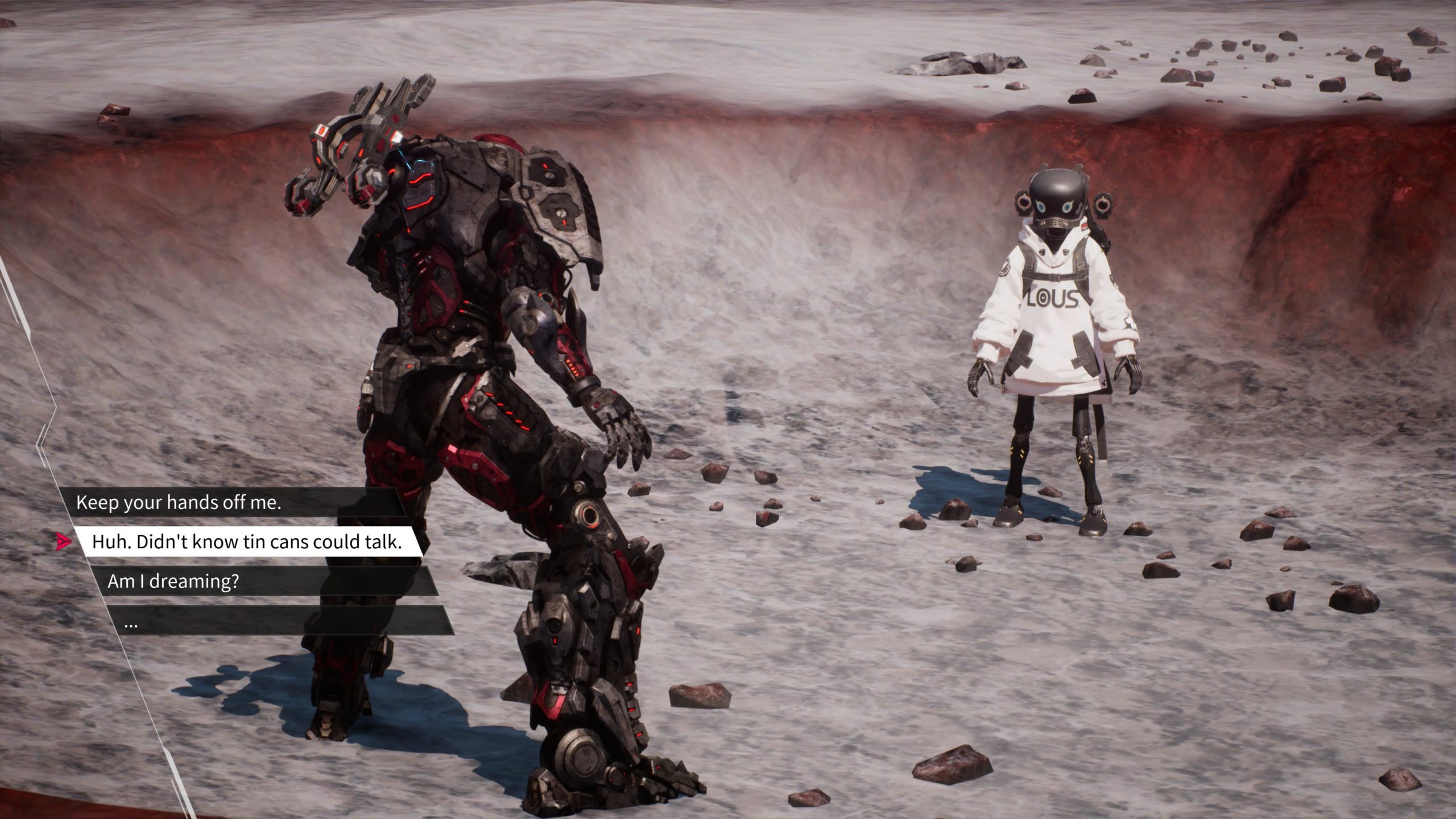
Forge runs a failing mech gladiator team and mercenary side hustle, and the deal is, if you help him get off the ground and keep prize money, you get the gear, a fixed suit and help to go back up to orbit and save your friend. You will fight in the arena, in your nice Axiom suit, and in between bouts do mercenary work for clients who think you are awesome from your bouts.
Cool – queue dozens of open world missions, a few gladiator bouts, working your way into a rebel army as you build toward fighting the Outers/Neun and maybe rescuing your friend. There is more to that about a third of the way through the quite short main story, but I won’t spoil it here.
Titanic Scion is a really tired, uncompelling sort of plot, and never delivers the story in a way that makes you care. There’s every anime trope character here, and they’re all mouthing off and getting the wrong end of the stick in dialogue exchanges, and it’s all just incredibly tiresome. I never cared, but thankfully you can get through the story in less than 20 hours, and then just have the open world to explore at your own pace.
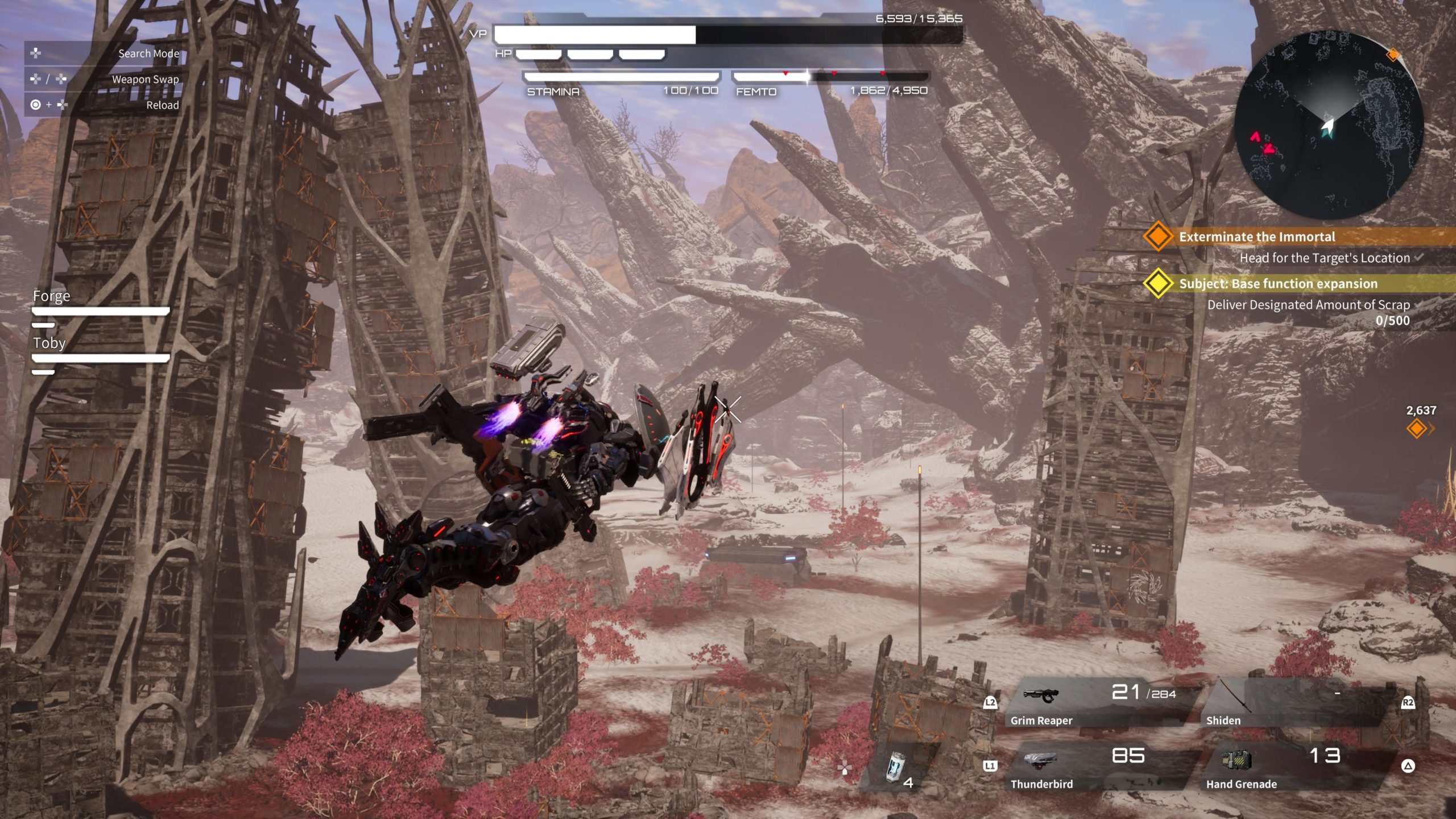
When you hit that overworld, it’s going to feel a little like Xenoblade, but it’s nowhere near as well put together as Xenoblade. The open world on the planet is sparse and empty, devoid of compelling content. You can glide for miles and find nothing more than the same dull fights, refuel stations, or a cave with a treasure chest. I just kept wondering what the point was, what was there to discover? The answer is virtually nothing beyond more weapons with better stats.
I did like the system where you could salvage from virtually any corpse, but you can only choose one thing out of two to four items/weapons. Means you’re always weighing up what to take.
However, there’s just such an ungodly number of items, so instead of feeling like great customisation options, they begin to feel unwieldy, overwhelming, and impossible to keep track of. The same for the number of systems in your base or around combat, upgrading your character or mech. I lost count in the first few hours just how many tutorials I was no longer really able to follow. By your tenth or twentieth hour, sure you’ve understood a couple of them, but there were still entire systems I’d barely touched, either because there were too many, or because they made such a minute difference to anything.
Fuel (or Femto) accumulation was a weird one. It recharges but is woefully slow, so try boosting somewhere for a bit, and you’ll eventually just have to walk or stand still. It’s a strangely arbitrary punishment that serves almost no purpose. A pointless restriction – why restrict how much I can fly in a mech fighting game with a huge, expansive world to get around, where I need to fly? Or restrict it in a meaningful way – like I have to carry fuel canisters to make it a certain distance.
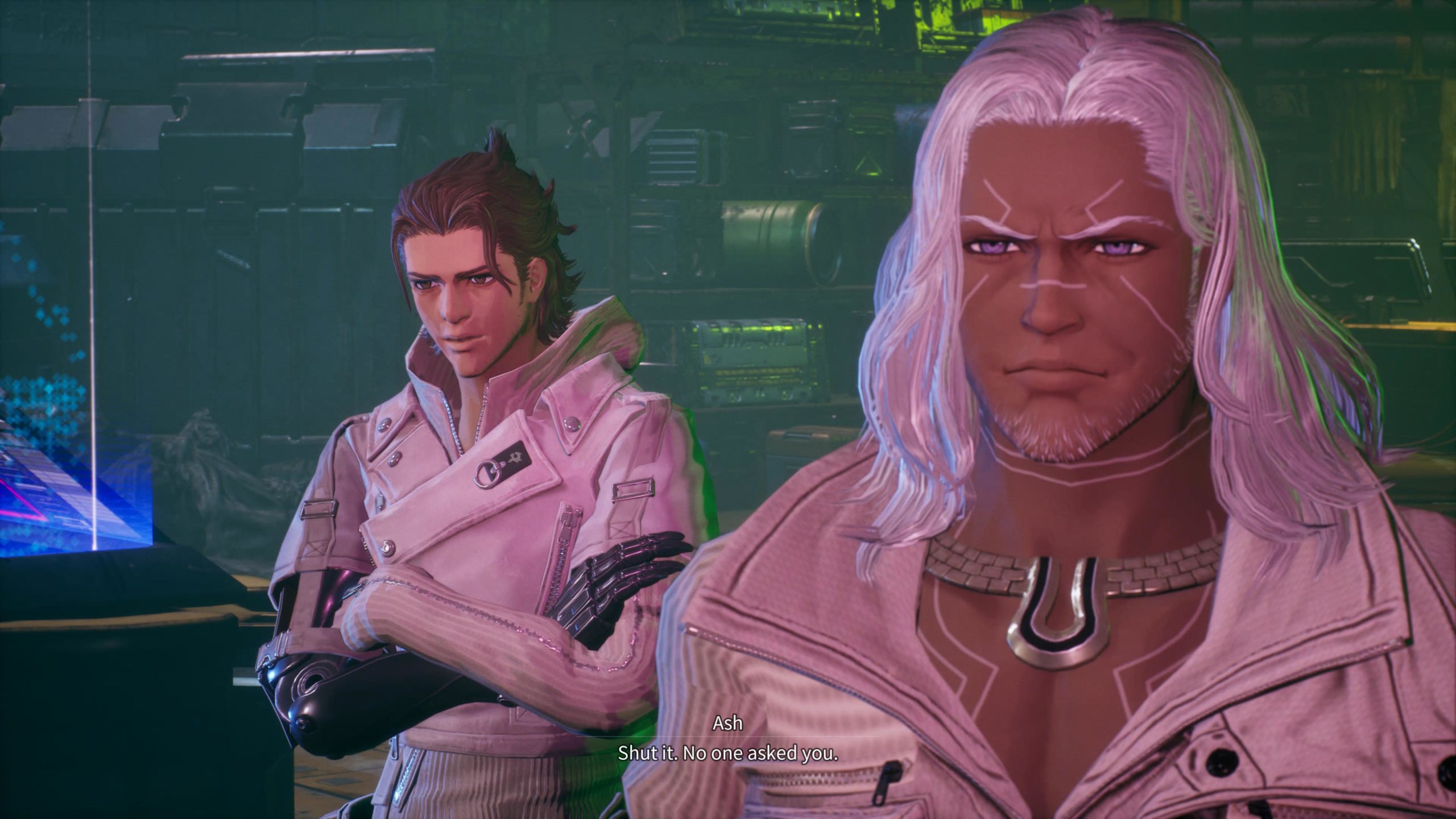
When I took off and had my first fight in mid-air, I did smile. That’s when there was this sudden feeling that with practice, I could start fighting like in Zone of the Enders, maybe? Your mech does its best work in the sky, and you can boost straight into the action at virtually any moment. You have a dodge and attack on the shoulders, and an aim and shoot and grenade on the other two shoulders. You cycle through weapons with the d-pad.
You have a stamina bar, which seems to only care about my dodge function. As in attacking didn’t deplete it. You have not one but two health bar systems – VP and HP. VP acts as the traditional health bar, and HP seems to be a backup recharge bar of health, like a second chance. And you have three of them to start with. You have a fuel system that penalises you for flying too much. You have a log full of minutiae, you have about six systems of upgrade from using weapons to upgrade them, to scrounging them from the dead, or fusion, which is where you take in parts of your enemies in the form of skills. You have an item system, you have blah blah blah.
Are you starting to get the idea that there’s simply a ridiculous amount of stuff and systems piled on systems? Most of it just gets lost in the noise. Outside of anything combat-related there’s even more systems – an extensive and overly complex card game, or the ice cream parlour in your base that replaces a cooking system. Or the co-op systems.
Combat is a mess, trying to handle so many systems. Enemies take barely any notice of your dodging; they just barrel into you. The stamina bar is meaningless; everything is working against something else. I had bosses where I used up all my health regens, and then an AI ally would just start healing me when needed. It just suddenly sucked all the danger and skill out of the fight, and I could just button bash through it, knowing I was always covered by this system. There is no comparison with Zone of the Enders.
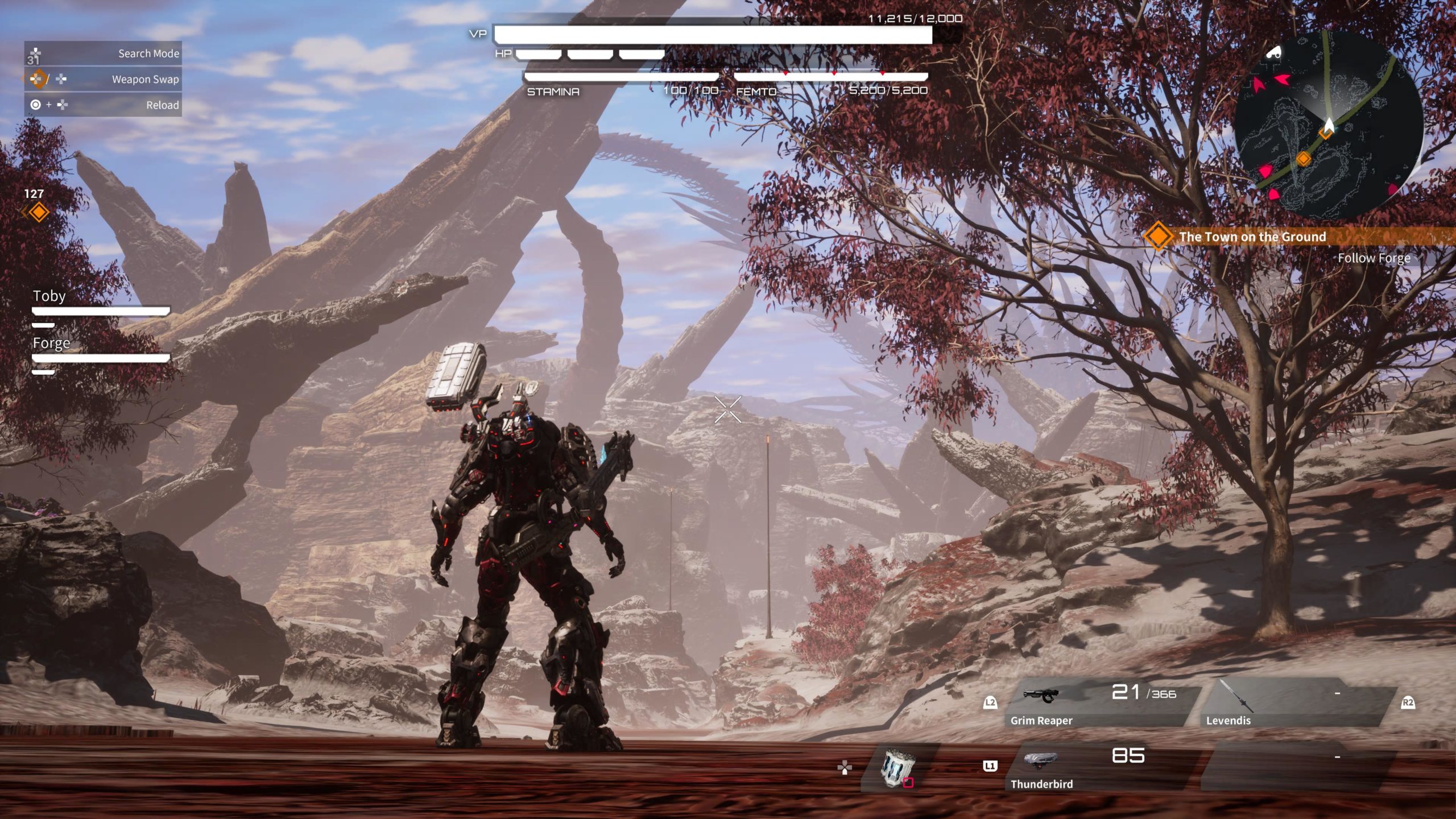
In the looks department, Daemon X Machina Titanic Scion leaves much to be desired. Low-res terrains and textures, poor facial designs and animations, and a general lack of animation wherever the game can get away with it. The mouth movements don’t correspond to anything, and the models are pretty ugly throughout, especially on the enemies and immortals. Doesn’t really matter what you do to yourself in character creation; you’re still gonna look dumb.
On the plus side, there are a fair number of fun glitchy pieces of music in Daemon X Machina Titanic Scion. I enjoyed the title music, the menu music, plenty of Dynasty Warriors-esque battle refrains – those were fun. It’s unlikely to go down as a pinnacle of soundtracks, but it was marginally better than the surrounding game, so it deserves a mention.
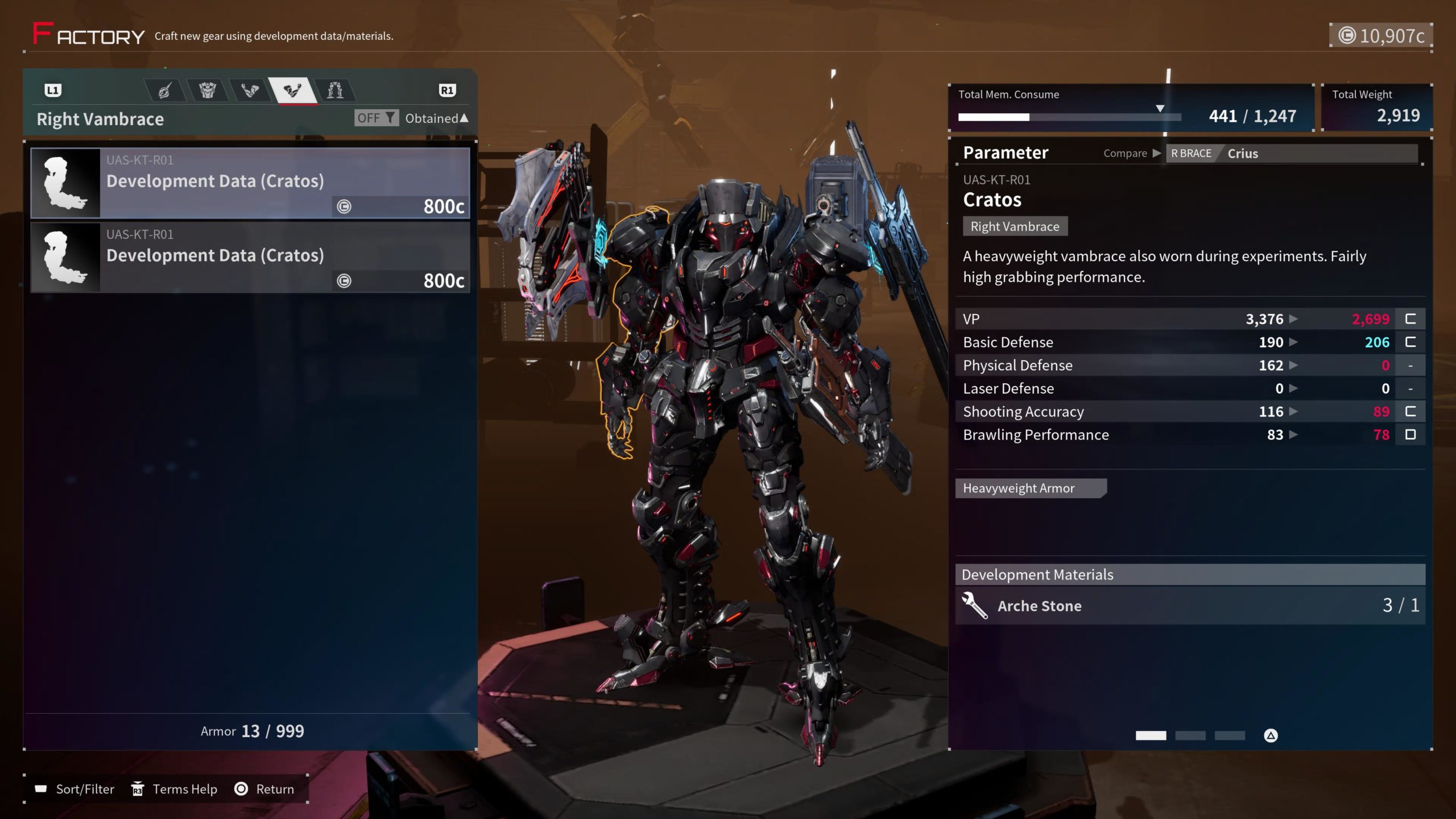
For me, Daemon X Machina: Titanic Scion could have benefited from doing away with its character creation almost completely and having a named protagonist. You could have still had most of the customisation options intact, just with the mech. This way, the story would have been able to find a better focus and emotional impact than just nameless merc does jobs and helps rebels. Having a silly character with a flat face and silly hair hindered the game and never helped.
It also should have done away with its empty open-world in favour of tighter designed dungeons and mission structure – the whole mercenary missions and barren open world just makes the whole thing feel like a long-abandoned MMO day one. It should have done away with at least a few of the weapon systems to make combat feel tighter. And there needed to be restrictions on things, rather than just a free-for-all – make ammunition or health items mean something.
If development time had been spent on character and enemy art, or on the narrative, or on the mission structure, instead of fluff like character creation, ice cream parlours, and card games, maybe there’d be a better game to show for it. Then I start to realise these changes would have barely made a dent in the issues Titanic Scion suffers from. It’s a scattergun approach to a game – dozens of systems so that there’s lots to do, but nothing has any depth or works consistently to be better than merely average.
Daemon X Machina: Titanic Scion is available now on PlayStation 5 (review platform), Xbox Series S|X, Nintendo Switch 2, and PC via Steam.
Developer: FIRST Studio
Publisher: XSEED Games, Marvellous
Disclaimer: In order to complete this review, we were provided with a promotional copy of the game. For our full review policy, please go here.
If you enjoyed this article or any more of our content, please consider our Patreon.
Make sure to follow Finger Guns on our social channels. Twitter, Facebook, Twitch, Spotify or Apple Podcasts – to keep up to date on our news, reviews and features.
